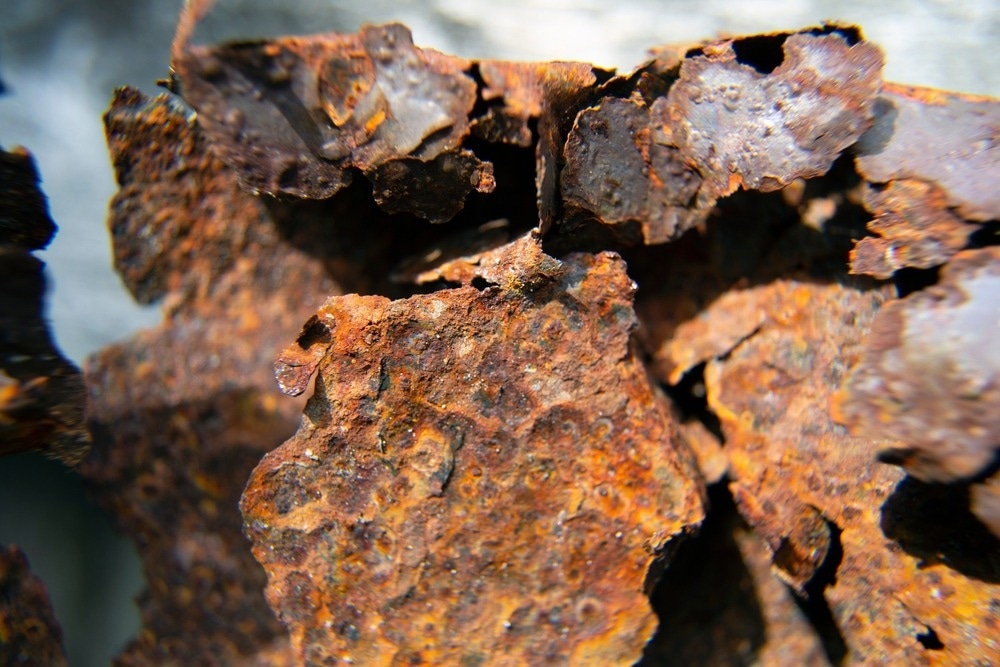Each year, almost a trillion dollars are spent in the United States to combat metallic corrosion, an electrochemical reaction that happens when metals oxidize and start to rust. Scientists have now assessed the level of impact corrosion has on global carbon emissions.

Image Credit: Hey_Alice/Shutterstock.com
Global steel manufacturing has been gradually increasing for decades. Due to steel’s low corrosion resistance, a portion of this requirement is to substitute steel used in construction materials that have corroded with time.
Minimizing the amount of steel that needs replacing due to corrosion—according to Gerald Frankel, Co-Author of the study and Professor of materials science and engineering at The Ohio State University—might have measurable implications on how much greenhouse gas is generated to produce steel.
Although prior studies assessed the current economic cost of corrosion to be between 3 – 4% of a nation’s gross domestic product, the recent study, headed by Ohio State alum Mariano Iannuzzi, is the first to assess the environmental impact of steel corrosion.
The findings were published in the journal npj Materials Degradation.
Given society’s reliance on coal fuel, iron and steel production is one of the largest greenhouse gases emitters of any industry. But most of the costs associated with the industry actually stem from the energy that goes into creating steel, and that energy is lost as the steel reverts to rust, which is similar to its original form of iron ore.
Gerald Frankel, Study Co-Author and Professor, Materials Science and Engineering, The Ohio State University
The time taken for steel to corrode is mostly determined by the severity of the environment and the alloy composition. Still, this environmentally costly issue, according to Frankel, is only growing stronger.
Using historical carbon dioxide intensity data to assess carbon dioxide levels per year beginning in 1960, the scientists discovered that in 2021, steel production contributed to 27% of the carbon emissions of the global manufacturing sector and 10.5% of overall global carbon emissions. Corroded steel replacement was responsible for 1.6 to 3.4% of emissions.
However, there is some encouraging news; due to steel industry regulations, technological developments in the steelmaking process have resulted in a 61% reduction in energy usage over the last 50 years.
Despite this progress, the study’s findings are a call to action for policymakers and industry officials to revise and coordinate international policy on steel manufacturing and corrosion management, according to Frankel.
Coordinated international strategies, as well as decreasing global steel demand, by using best practices for corrosion mitigation, could better improve global corrosion management strategies and drastically reduce the rise in greenhouse gas emissions we’re seeing due to repeatedly replacing corroded steel.
Gerald Frankel, Study Co-Author and Professor, Materials Science and Engineering, The Ohio State University
If measures to reduce steel’s carbon footprint are not taken soon, the researchers estimated that greenhouse gas emissions from the steel industry will account for approximately 27.5% of total global carbon emissions by 2030, with corroded steel accounting for approximately 4 to 9% of that total.
As a result, the Paris Agreement’s target of limiting global warming to 1.5 °C, as well as the United States’ own domestic climate goals, would be nearly impossible to achieve. According to the research, management strategies such as utilizing machine learning technologies may be one of the finest opportunities to lower the Earth’s carbon dioxide levels.
However, if humans are unable to fulfill these conditions, the repercussions for the Earth’s climate would be severe, so more people must be made aware that a low-carbon steel sector is required to avoid such a dystopia, according to Frankel.
Global warming is a societal challenge that takes coordination of a lot of multidisciplinary approaches. Our work is bringing to light an issue that seems to have gone under the radar in terms of the importance of adding to the problem.
Gerald Frankel, Study Co-Author and Professor, Materials Science and Engineering, The Ohio State University
Journal Reference:
Iannuzzi, M. & Frankel G. S. (2022) The carbon footprint of steel corrosion. npj Materials Degradation. doi.org/10.1038/s41529-022-00318-1.